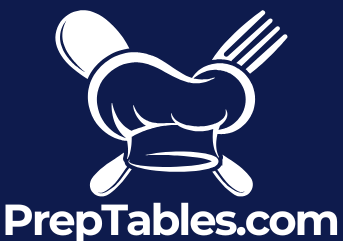
Types of Stainless Prep Tables
Share
- Stainless steel prep tables come in various grades, each with unique characteristics and applications.
- Common grades include 304 and 316, known for rust and corrosion resistance in food service.
- 304 stainless steel contains 18% chromium and 8% nickel, offering excellent formability and weldability.
- 316 stainless steel, or marine grade, has higher molybdenum content for better pitting resistance.
- Grade 430 is a more economical option, suitable for kitchen appliances but less corrosion-resistant.
- Consider the intended use when selecting stainless steel products for optimal performance and durability.
- Researching stainless steel grades is essential for informed purchasing decisions, especially for sinks and tables.
- Understanding these grades ensures durable products that resist corrosion and withstand high temperatures.
When selecting stainless steel prep table it is crucial to be aware of the various grades of stainless steel that exist. Stainless steel is popular for many products. It is strong, resists corrosion, and can handle high temperatures. However, the quality of stainless steel can vary significantly. There are numerous grades of stainless steel, each possessing distinct characteristics and applications.
Common Grades: 304 and 316
The two most frequently encountered grades of stainless steel are 304 and 316. These grades are commonly utilized in the food service sector because of their exceptional resistance to rust and corrosion. 304 stainless steel, also known as 18-8 stainless steel, has 18% chromium and 8% nickel. It is famous for its great formability and weldability. On the other hand, 316 stainless steel, which is also called marine grade stainless steel, has a higher molybdenum content. This feature improves its resistance to pitting and crevice corrosion in tough environments. It is suitable for industrial and marine use.
Economical Option: Grade 430
Another type, 430 stainless steel, is often used for kitchen appliances and household items. It is cheaper than both 304 and 316. However, its lower resistance to corrosion means that it may not be ideal for items exposed to severe conditions.
Consideration for Purchase: Matching Grade to Intended Use
When buying stainless steel prep table, it is vital to think about their intended use. For example, a work table may not need as much corrosion resistance as stainless steel tables. A lower grade could be enough. Conversely, industrial stainless steel cleaning equipment may necessitate a higher grade to guarantee durability and longevity. Additionally, researching and comprehending the various grades of stainless steel is essential prior to making a purchase. For instance, knowing how to buy a stainless steel sink is a significant consideration when selecting a sink. The best grade of stainless steel depends on the specific use and how much corrosion resistance is needed.
Conclusion: Informed Choices for Durable Products
In summary, it is important to know the different grades of stainless steel. This knowledge helps when buying stainless steel tables. The predominant grades—304, 316, and 430—each have their own specific attributes and applications. When you buy a prep table, it is important to think about how you will use it. You should also look into the different grades of stainless steel. This will help you make the best choice for your needs. With this knowledge, you can trust that your stainless steel products will be durable. They resist corrosion and can handle high temperatures for a long time.
